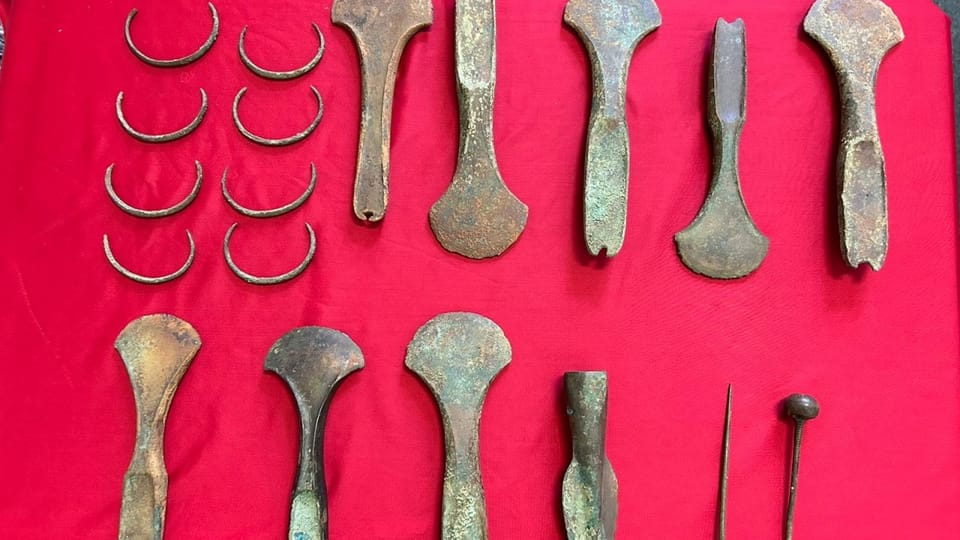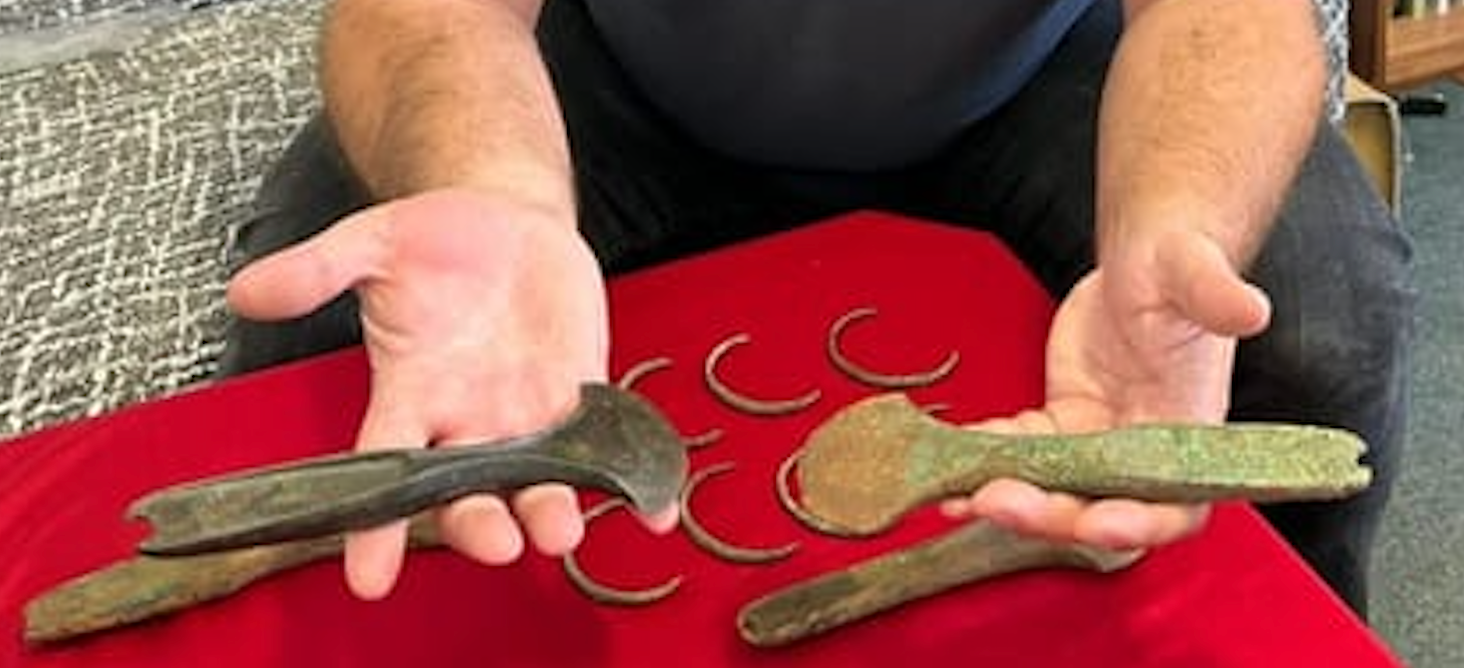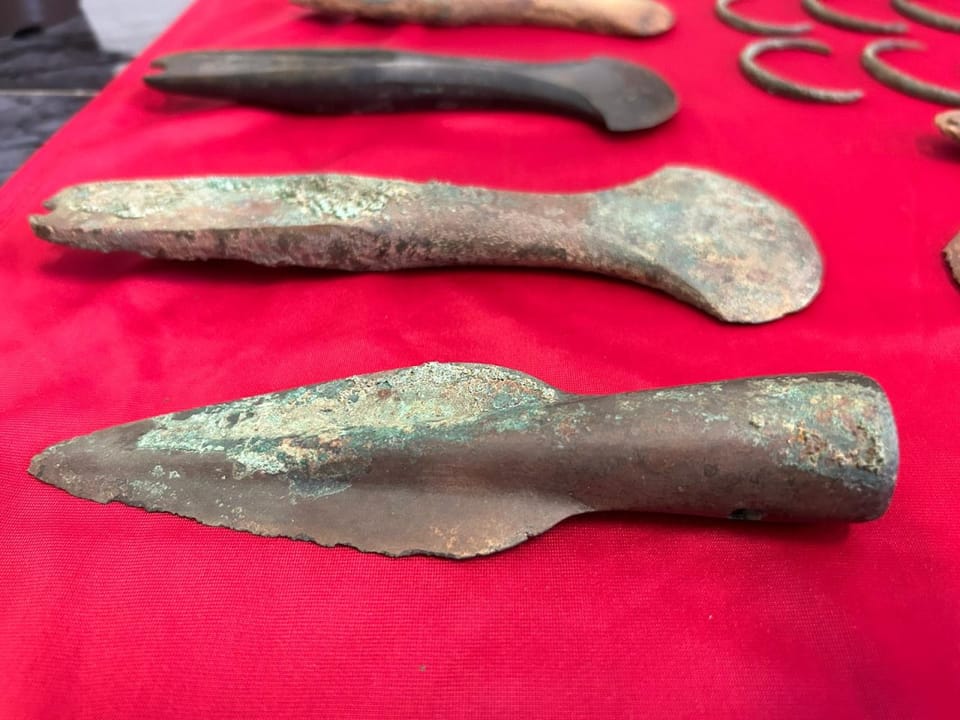Archaeologists find 3,600-year-old stash of buried weapons and jewellery in Czech Republic
Researchers are not quite sure why the artefacts were hidden in that place but have three theories
Your support helps us to tell the story
From reproductive rights to climate change to Big Tech, The Independent is on the ground when the story is developing. Whether it's investigating the financials of Elon Musk's pro-Trump PAC or producing our latest documentary, 'The A Word', which shines a light on the American women fighting for reproductive rights, we know how important it is to parse out the facts from the messaging.
At such a critical moment in US history, we need reporters on the ground. Your donation allows us to keep sending journalists to speak to both sides of the story.
The Independent is trusted by Americans across the entire political spectrum. And unlike many other quality news outlets, we choose not to lock Americans out of our reporting and analysis with paywalls. We believe quality journalism should be available to everyone, paid for by those who can afford it.
Your support makes all the difference.Archaeologists in the Czech Republic have found a hoard of buried weapons and jewellery dating to around 1600 BC, a rare discovery that could shed more light on life in central Europe during the Bronze Age.
Researchers surveying a site in the town of Budyně nad Ohří stumbled upon the bronze artefacts, including eight axes and pieces of jewellery, from over 3,600 years ago.
The site, 40km northwest of the capital Prague, was first found a year ago by an archaeologist using a metal detector.
A series of excavations since have unearthed eight arm rings, as many axes, two pins and one spearhead, all dating to the Bronze Age.
Researchers suspect the artefacts were part of a collection that was purposefully buried underground.
While researchers are still not quite sure why the objects were hidden in that place, they have three theories.
“First, such hoards could be used as votive gifts or gifts to the deities,” archaeologist Martin Trefný told Radio Prague International, Czech Republic’s public broadcaster.
Second, the hoard was likely buried because of “some incident that happened in the village”.
“The third theory is that it could be a storage pit of some producer or trader,” Dr Trefný said.

Researcer have analysed the artefacts uncovered over the past year and are certain about their age but suspect one of the axes is much older.
“It is from the Early Bronze Age. So the overall age of the finds is about 3,500 years,” Dr Trefný explained.
During the Bronze Age, which spanned from 3,300 BC to 1,200 BC, people in Europe made the shift from fashioning tools from stones to using bronze, an alloy that was made by melting and mixing tin and copper.
Around 1,200 BC, archaeological evidence suggests, most of the Bronze Age societies collapsed and were abandoned, likely due to conflicts.

Towards the end of the Bronze Age, entire kingdoms, empires, cities and societies collapsed within just a few decades throughout Europe, Asia and Africa.
Although similar hoards of Bronze Age artefacts have been discovered elsewhere, researchers described the latest find in the Czech Republic as “still quite rare.”

The bracelets discovered at the site were worn as forearm ornaments just as they would be today while the pins were likely used to fasten clothing or to style women’s hair, scientists said.
“Axes could have been used as tools or weapons. The latter function also applies to the spearhead,” Dr Trefný said.
The artefacts, researchers said, could be worth “millions of crowns.” A million Czech crowns is about $42,620.
“For us, the historical and the scientific value is much higher than the financial value,” the Czech archaeologist said.
The discovery could help archeologists better understand the craftsmanship of Bronze Age casters in Europe, they said.
The artefacts would go on display at the Podřipské Museum “in the near future”.

Join our commenting forum
Join thought-provoking conversations, follow other Independent readers and see their replies
Comments